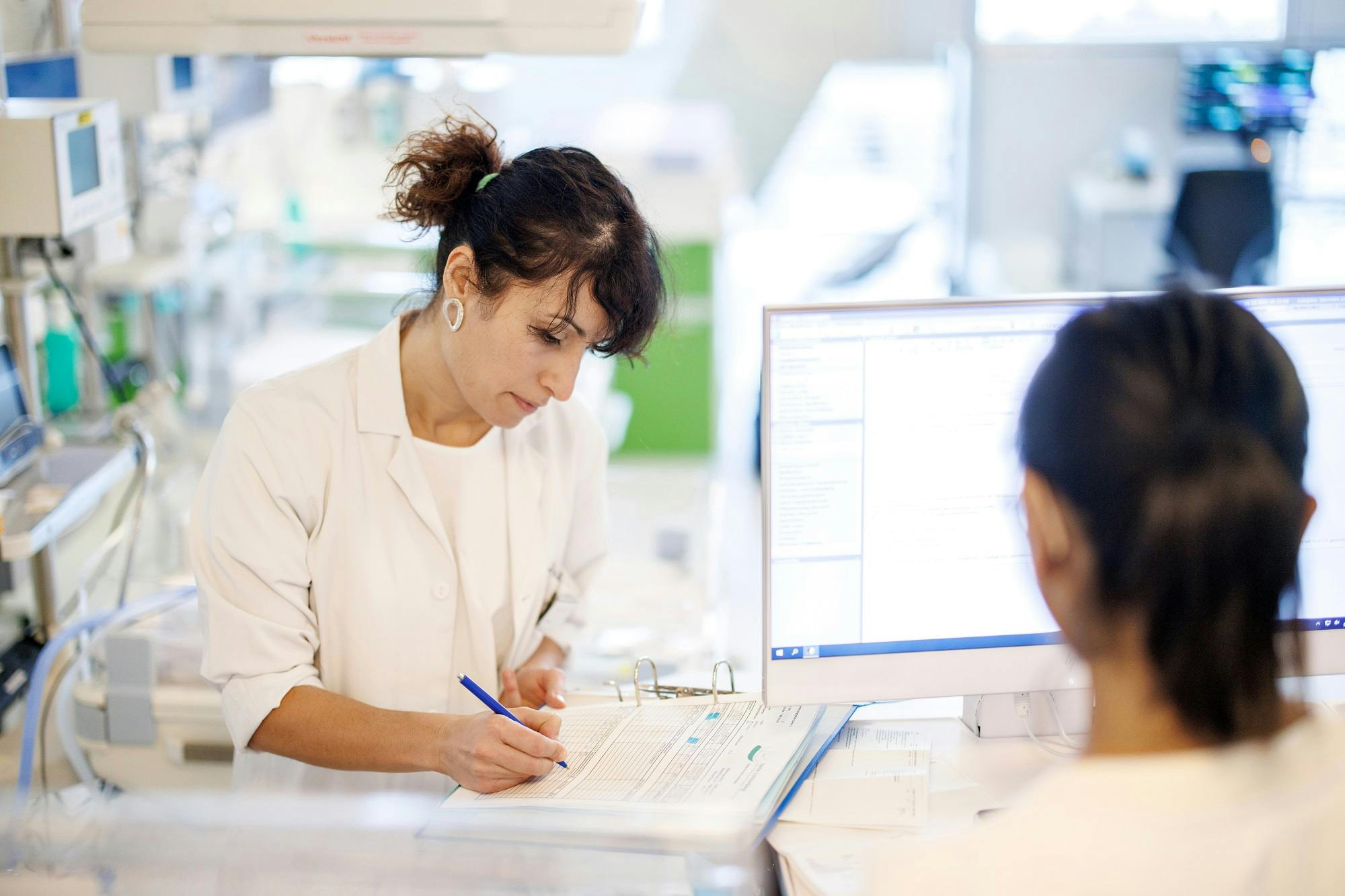Road accident: 6 steps to react correctly
February 3, 2023
15 min
Pressure, uncertainty, fear and panic quickly set in when you are the first person to arrive at the scene of an accident. But always be aware: you can't do anything wrong - unless you do nothing. In addition, it is a legal requirement in Switzerland to provide assistance in the event of a road accident. Memorise these six steps so that you can proceed in a structured manner in an emergency.
React correctly in 6 steps
1. do not look away, pull over and switch on the hazard warning lights and dipped headlights
Park your vehicle at least ten metres away from the scene of the accident at a safe distance so that you do not block the way of the emergency services. Also make sure that your car does not obstruct traffic and, if possible, only move along the edge of the carriageway, preferably behind the crash barrier.
2. get an overview
Memorise important information about the accident scene or write it down so that you can give it to the emergency services on the phone. The following questions can help you to get an idea of the situation:
- How many vehicles are involved?
- Are there any (serious) casualties?
- Is the accident site difficult to recognise or confusing?
- Is there a risk of fire or explosion due to leaking petrol?
- Is the vehicle involved in the accident carrying dangerous goods such as chemicals?
3. secure the scene of the accident to prevent further accidents
This is very important, because if other vehicles were to drive into the scene of the accident without braking, the consequences would be fatal. Put on your fluorescent waistcoat and place the breakdown triangle clearly visible at the side of the road. Attention, the following applies here: in urban areas 50 metres before the accident site; on the motorway at least 100 metres before . At night or in poor visibility, an assistant should swing the breakdown triangle or a torch up and down on the roadside 50 metres before the accident site. On the motorway, this is mandatory 100 metres before the scene of the accident. You should also take into account bends and elevations that could make it difficult to see the breakdown triangle.
If possible, all vehicles involved in an accident on the motorway must be directed to the emergency lane as quickly as possible. Also remember to keep a passageway clear for the emergency services.
4. dial the emergency number
Before you start providing assistance, remove all injured persons from the danger zone and alert the emergency services. The sooner you dial the emergency numbers, the faster professional rescuers will arrive at the scene of the accident to provide professional assistance to the injured. The information that is important for the paramedics on the phone can be found in the "Reporting scheme". Below that: Where the accident has occurred, what exactly has happened and the situation at the scene of the accident. After raising the alarm, stay on the phone until the centre is the one to end the call.
The most important emergency numbers that you should have saved on your mobile phone are
- 112 European emergency number
- 144 Ambulance
- 117 Police
- 118 Fire brigade
- 1414 Rega
- 145 Tox Info Suisse
0/0
5. provide first aid
Once you have carried out all the previous steps, you can take care of the injured person until the emergency services arrive. The measures you take will depend on the injuries of the casualties. First attend to those who are seriously injured or even in mortal danger and stop any life-threatening bleeding immediately.
- If the injured person is conscious: Protect the person from cold, heat or moisture and ask about pain, restricted movement or numbness. Try to reassure the person and inform them that the emergency services are on their way.
- For injured persons who are unresponsive or unconscious: First and foremost, check that the person is still breathing for a maximum of 10 seconds. To do this, hold your cheek to the casualty's mouth and nose and your hand on their stomach. If the person is breathing, place them in the recovery position. If the victim is not breathing, start chest compressions immediately. Start with 30 compressions, followed by two breaths, then another 30 compressions and another two breaths and so on (30 compressions, 2 breaths) - do not stop until the person is breathing or the emergency services arrive.
Caution: First aid in the event of an accident with a back injury is particularly delicate. People suspected of having a back injury should never be moved; parts of the spine may be broken without the spinal cord being injured. To avoid secondary damage, the injured person must be left lying down if the surroundings are not dangerous. To keep them calm and prevent them from moving, you as the first aider should encourage them and provide mental support until the emergency services arrive.
6. do not forget to document the damage to the vehicle and report it to your insurance company
0/0
Weitere Beiträge
Counsellor
Hormone fluctuations in winter: What's really behind them?
Many women experience changes in their physical and mental well-being in winter. They feel tired more often, less resilient or more emotionally sensitive. Cycle changes or more intense premenstrual symptoms are also noticed more often during this time. In addition to external factors such as the cold, less exercise or a change in lifestyle, hormonal processes can also play a role.
Counsellor
Spinal surgery: everything you need to know
At Zollikerberg Hospital, the highest precision applies to one of the most central and at the same time most demanding areas of the body - the spine. Spinal surgery here means not only modern, minimally invasive technology, but above all sound expertise, experience and careful, holistic care. This is what Dr Filippo Mandelli, Head of the Spinal Surgery Clinic, and his team stand for. They treat conditions such as herniated discs, spinal canal stenosis, spondylolisthesis, spinal deformities and degenerative changes competently and sensitively and accompany patients on their way to greater stability and quality of life. In this interview, you can find out what is particularly important in these complex interventions - and what modern spinal medicine can achieve today.
Counsellor
Eyelid lift (blepharoplasty) for drooping eyelids - a brief overview
The eyes are the mirror of our soul - and yet drooping eyelids, bags under the eyes or sagging skin on the eyelid can leave a tired and older impression. If you would like to regain an alert, fresh look, an eyelid lift (blepharoplasty) at Zurich Plastic Surgery can help. In this blog post, Prof Dr Hisham Fansa, Head of Plastic Surgery Zurich, explains why many people decide to have their drooping eyelids corrected and what is important during this procedure.


